Keep Your Yard Looking Sharp With The Best String Trimmers, Tested and Approved
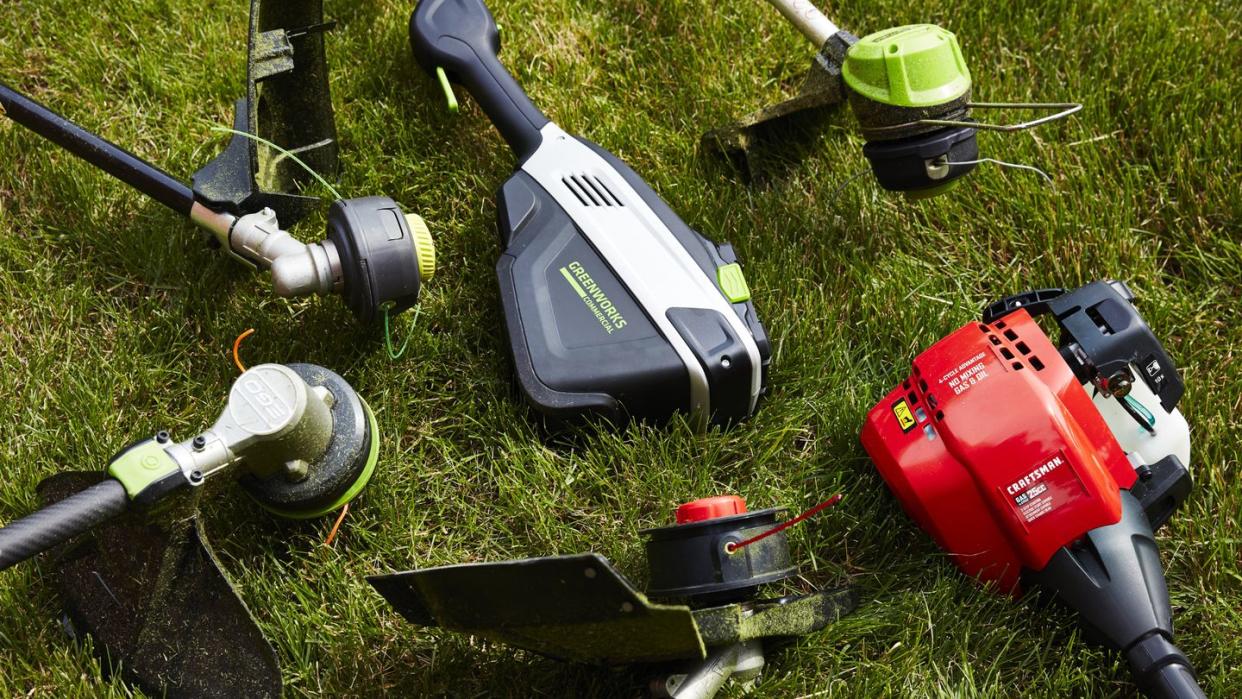
"Hearst Magazines and Yahoo may earn commission or revenue on some items through these links."
A string trimmer is the indispensable power tool that puts the finishing touches on a yard or garden by shaving off grass that a lawn mower can’t reach. Some people mow then trim, others trim then mow (particularly those who bag the clippings). Either way, the results should be a neat landscape.
But trimmers do more than neaten up. They can cut down tall grass and weeds to keep border areas under control, either prior to mowing or as an alternative to mowing. With a deft hand they can be turned sideways to cut a notch along sidewalks, patios, and drives, preventing grass and weeds from growing over the pavement’s edge.
We tested a broad range of string trimmers, from compact light-duty models for trimming grass along walks and driveways up to plant-thrashing beasts for taking down tall weeds. Below, you’ll find our buying tips along with our test results on the best string trimmers.
The Best String Trimmers
Best Overall: Husqvarna 330iKL Combi Switch + String Trimmer
Best Cordless Pro-Duty: Echo eForce DSRM-2100 String Trimmer
Best For Contractors: DeWalt DCST972X1 String Trimmer
Best Heavy-Duty: Ryobi RY40290VNM String Trimmer
Most Powerful Gas: Echo SRM-2620 String Trimmer
What to Consider
Gas vs. Electric
A string trimmer spins a line head by means of either a gas engine (in almost all cases burning a gas-oil fuel mixture) or a lithium-ion battery and a DC motor. The harder you work the string trimmer, the tougher the machine you need to buy.
Although cordless string trimmers still lack the raw weed-slashing power of professional-grade gas-engine machines, they have narrowed the performance difference thanks to large batteries that can produce as much as 60 volts of power. Another benefit that a battery-powered trimmer provides that a gas trimmer can’t touch is that it’s quiet. They put out decibels in the low 80s compared to the ear-splitting triple-digit decibels that gas-powered machines produce.
If you need weed-trimming power above all else, gas trimmers provide it, particularly if you equip yours with a heavy-duty line. And whereas cordless trimmers are limited by the battery’s runtime, a gas trimmer runs indefinitely as long as you keep it filled with gas.
Feed
How a trimmer feeds out line as it trims varies from model to model. Manual feed lines require you to shut off the trimmer and extend the line by hand, while bump feed trimmers allow you to release my line by simply bumping the head on the ground. Some trimmers have a push-button feed that allows you to release a line by pressing the button. Higher-end models automatically release more line as it wears out. Choose one that suits your job. If you don’t have much to trim, a manual feed or bump feed should suffice. For bigger jobs, invest in trimmer with a press-button or automatic feed.
Also, if your needs are closer to the heavy-duty end of the work spectrum, buy a machine that powers the line head with a solid steel drive shaft and not a cable. These trimmers are heavier and more expensive than cable-driven trimmers, but they stand up better to cutting heavy weeds and light brush.
Speed Control
Most trimmers allow you to vary the speed, which is crucial to avoid damaging wood fencing and nearby shrubs as you work. Gas-powered trimmers have a throttle that gives you fine control over how fast the head spins by squeezing and releasing the trigger. Battery-powered models typically have two speed options that you can control from the handle.
How We Tested
We test our gas-engine and battery-powered string trimmers in identical fashion. We use the machines on ordinary suburban lawn grasses such as blue grass, perennial ryegrass, and fescues in a variety of suburban and rural locations. However, our most intense testing occurred along the sloping bank of a sand floor drainage basin in southern New Jersey, where we use the trimmers to cut down knee-deep weeds and wild flowers. We also did considerable edging where sidewalks meet lawns.
For battery-powered trimmers, our primary goal was to assess power and run time. For gas-engine trimmers, we wanted to judge whether the power they provided was offset by their noise and weight. For all trimmers, we wanted to see if each machine was comfortable and well balanced, and whether its line feed was finicky or robust. We found that especially when we were using the machines to cut down weeds, the growth was so tough, it took an immediate toll on the trimmer’s line, causing us to use the bump feed line mechanism at twice or three times the rate that we would in normal grass trimming.
Related Stories: Ditch Your String Trimmer Line—The Aero-Flex Snap & Trim Head Is Better | The Best Tools of 2024 | The Best Lawn Edgers for a Crisp Landscape
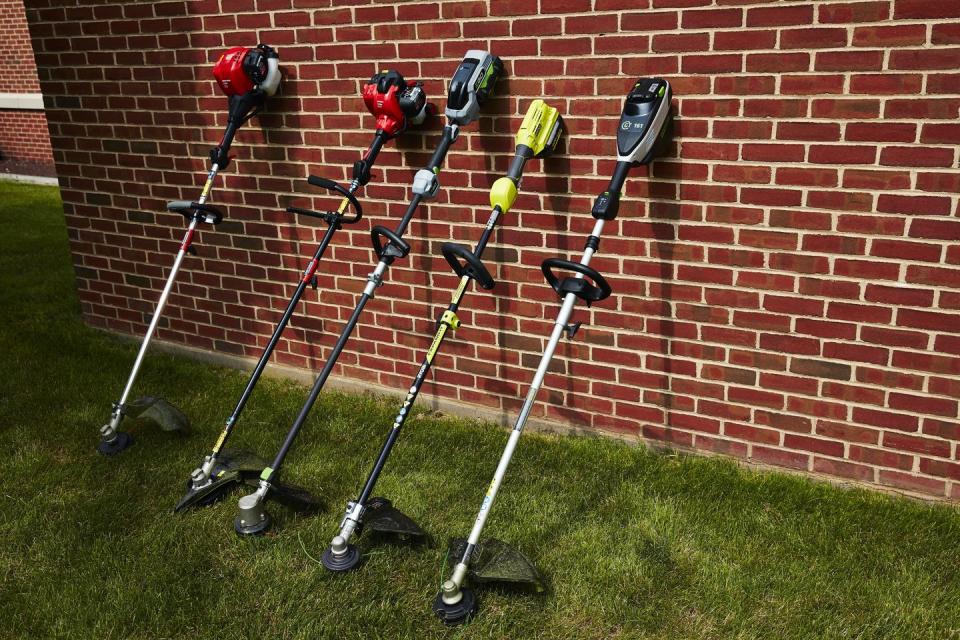
330iKL Combi Switch + String Trimmer
Husqvarna is highly regarded for its chainsaws among those who make a living chopping down trees, so it should come as little surprise that its string trimmers are pretty darn good too. We got the chance to test drive the 36-volt battery-powered 330iKL and didn’t come away disappointed. Having high expectations for the Husqvarna brand, we set it loose on denser brush, clearing tall weeds off the shoulder of a local bike path.
With its thick.095 Titanium Force line and broad 18-inch cutting width, we thrashed through vegetation with ease. This Husqvarna holds up well, too. After extensive testing, we experienced no decline in power, thanks to Husqvarna’s active cooling tech, or any snafus with line feed. In short, you won’t find a tougher or more powerful string trimmer not powered by a gas motor.

330iKL Combi Switch + String Trimmer
lowes.com
$339.00
Two buttons on the Husqvarna’s control panel direct the line head to spin clockwise or counterclockwise. The ability to reverse head direction can help to untangle weeds from the line head. It’s also useful in edging and for control to direct where debris flies as you trim.
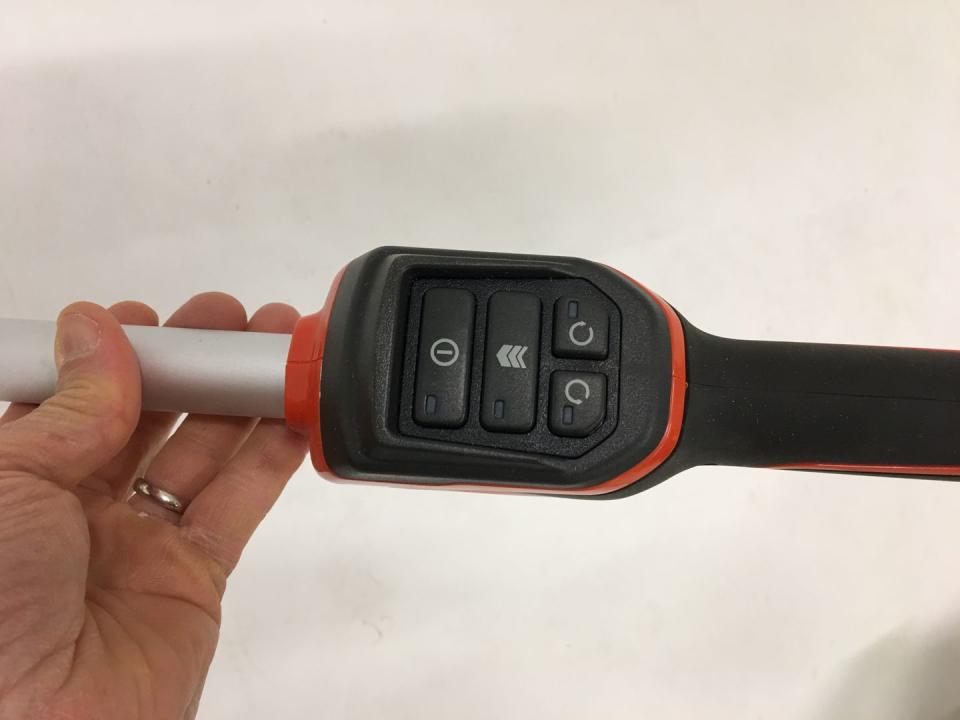
ST 1623T String Trimmer
Ego pulled out the stops in engineering this string trimmer. Start with the fact that you never have to bump feed the head, instead it feeds out string automatically. When you run out of line, simply feed a precut length through the head and press the rewind button at the end of the shaft. The string zooms into the head in seconds. Our test found the 56-volt brushless motor delivers power to spare.
A two-speed selector switch enables you to choose between going full out at vegetation or dialing back the speed for around delicate shrubs. A telescoping shaft lets you adjust the length to suit your tastes, while a lightweight carbon-fiber shaft makes it easier to handle.

ST 1623T String Trimmer
amazon.com
$329.00
RY40290VNM String Trimmer
Ryobi specializes in tools and machines that are heavier than what a homeowner typically needs but not quite beefy enough to suit a contractor. Its newest string trimmer is a case in point. It’s got more than enough power for normal grass, but—knowing its features—we reserved a stand of dried milkweed stalks and some light briers to test its power. It sailed through.
Aside from a motor that produces decent torque, its string head is wound with a good quality twisted.095 line–stout stuff, we learned. Rewinding that line is simplified by a crank that the company provides with the RY40290VNM. Slip the gadget over the bump feed button on the bottom of the line head and crank it. The machine’s carbon-fiber tube keeps this trimmer light, making it easy to handle.

RY40290VNM String Trimmer
amazon.com
$172.57
We used the trimmers to cut down knee-deep weeds and wild flowers.

eForce DSRM-2100 String Trimmer
We reserved some of the toughest test material for this string trimmer. You might think that unfair. We don’t. Having years of experience behind Echo’s’s string trimmers, we were confident this cordless 56-volt trimmer could handle the work. It did. We fogged our coveralls with bug spray to keep the ticks off, snapped the 2.5-Ah battery into the Echo and waded in, felling grass, weeds, and briers to clear the area for chainsaw testing. The Echo performed beautifully thanks to a robust 16-inch head that makes for a reliable line feeder.
When trimming around the base of trees and doing work that was less severe, we set the trimmer’s two-speed selector switch from high to low. The lower speed not only conserves battery life but makes the machine far easier to handle when edging. Plus it reduces the likelihood of accidentally damaging a fence post or, more importantly, a nearby plant. You won’t find a better all-around battery-powered line feeder.

eForce DSRM-2100 String Trimmer
amazon.com
$249.95
The Echo’s debris shield is narrow, to fit into tight spots, but it’s thick and solid. Its line head is also robust and a reliable line feeder.
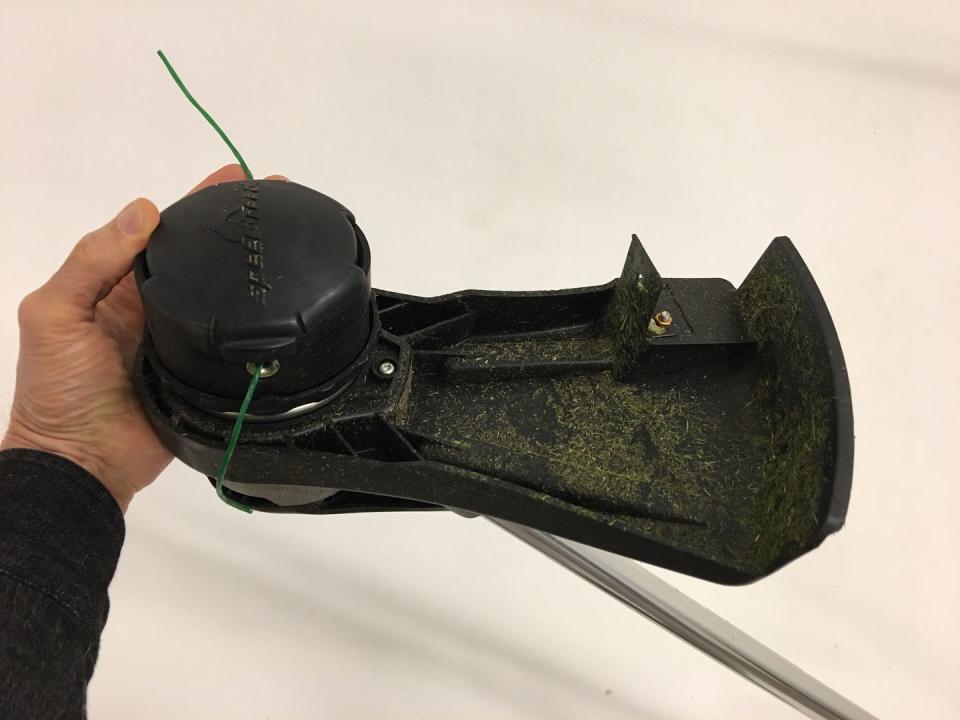
DCST972X1 String Trimmer
We attached a string trimmer accessory to DeWalt’s massive 60-volt power head and waded into a drainage basin to face off with some tall stuff, slicing down weeds, grass and light to medium briars as we went. If it wasn’t such hard work, it would almost have been fun. The DeWalt more than proved its capability in that jungle, then we slipped into its low (rpm) setting, tipped it vertically and cut a nice, neat channel at the edge of a sidewalk and along some curb.
This is a substantial machine, weighing 13.4 pounds. But its balance is good and we didn’t find it tiring to use. Nor did we find problems with the string trimmer head that were referenced online. What we did find is a rock solid trimmer capable of taking a pounding while delivering a clean cut.
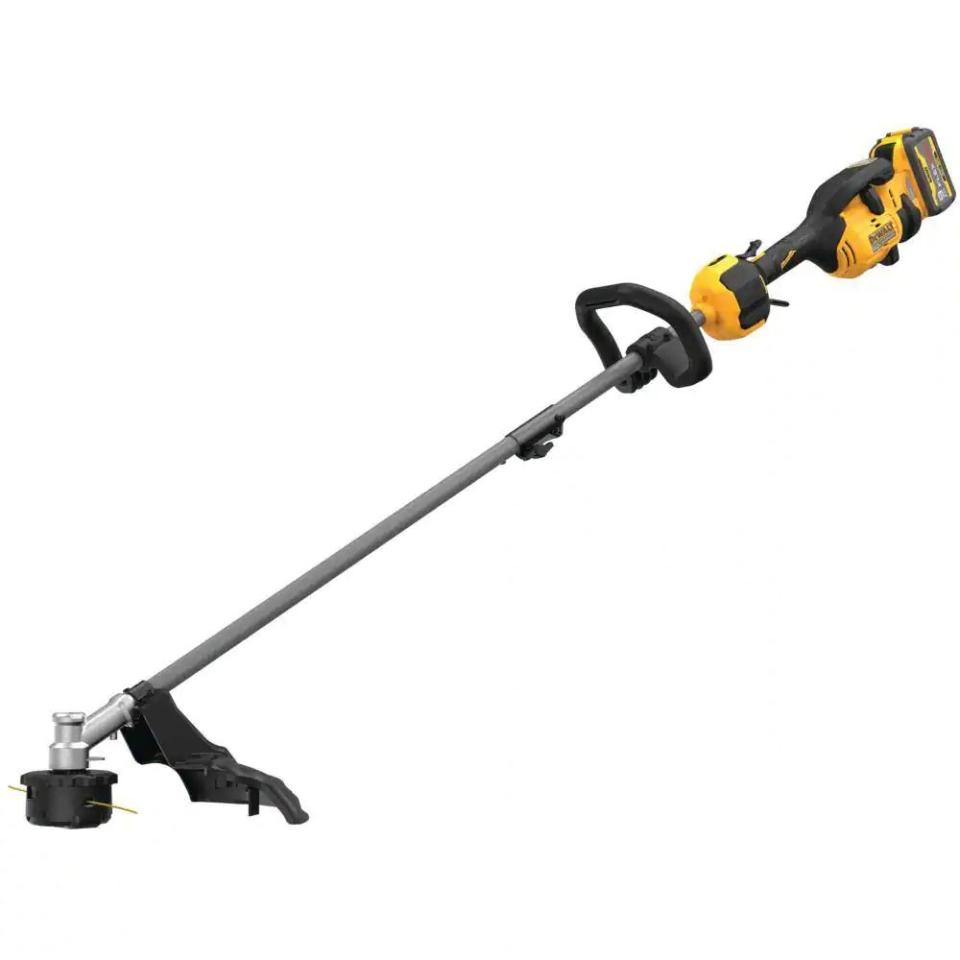
DCST972X1 String Trimmer
homedepot.com
$329.00
In contrast to the Echo’s debris shield, DeWalt’s shield is wide and deep. Its line head is also a reliable line feeder and the DeWalt’s braided line was effective at slashing grass and fibrous weeds.
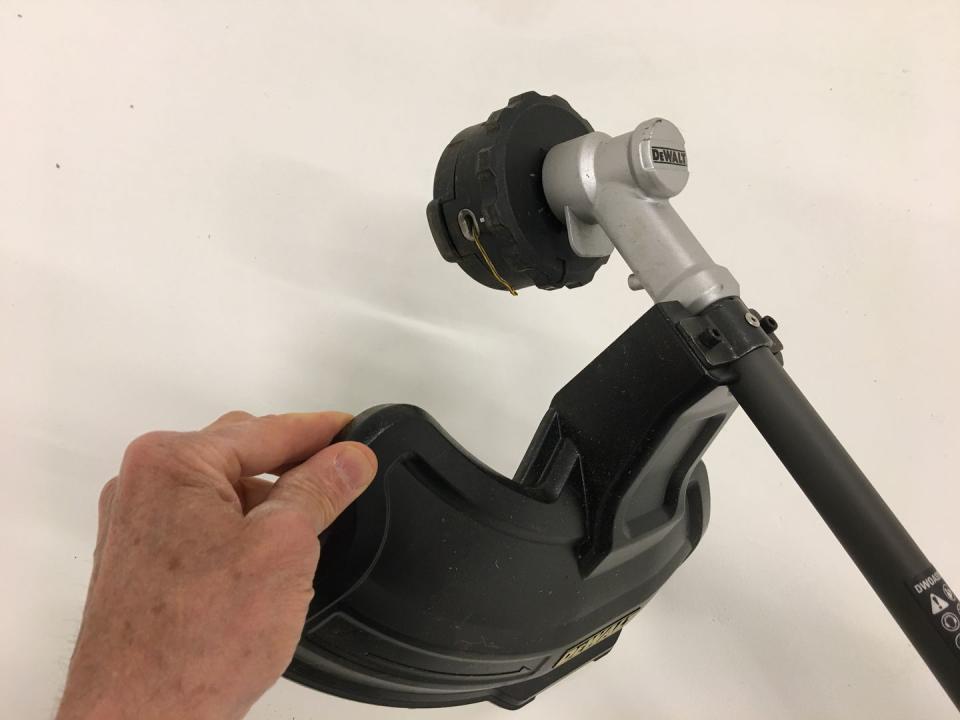
ALT4823B-00 String Trimmer Kit
Various Amazon brands we’ve tested haven’t been worth wasting time or money on. This string trimmer from the online retail giant’s Denali brand is an exception, turning in a surprisingly spunky performance. The dual.080 line-head charged through weeds and tall grass like a champ, but we were particularly surprised at how well it did edging vertically.
Just keep in mind that this is a light-duty trimmer, so be prepared to bump feed fresh line at a rapid clip as you edge. Other highlights of the Denali include a lightweight design that saves your arms and back, and a convenient high speed/low speed switch that allows you to throttle down to save your fences and shrubs.
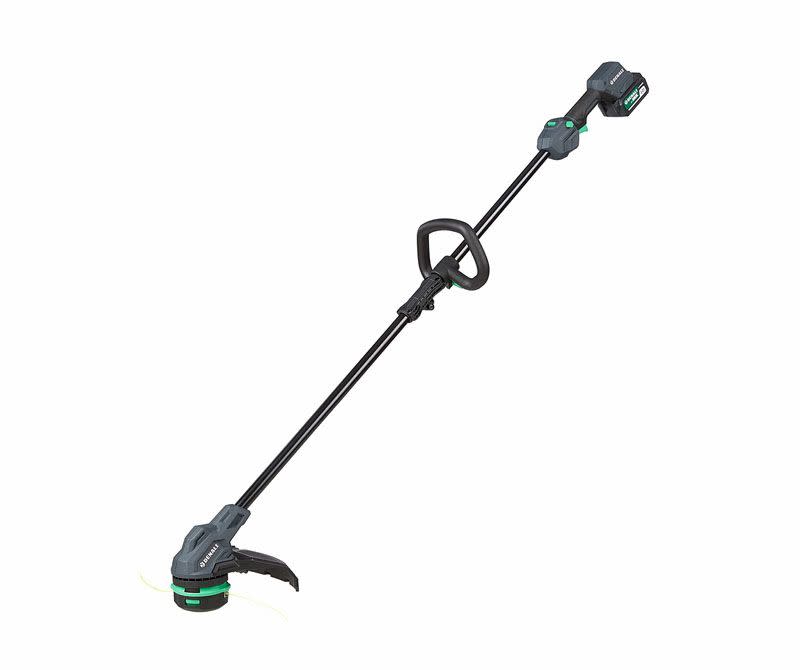
ALT4823B-00 String Trimmer Kit
amazon.com
$132.99
The Denali has a well-designed grip and control. The High-Low speed switch and the safety latch are closely grouped and the safety latch is easily accessible to left-hand and right-hand users.
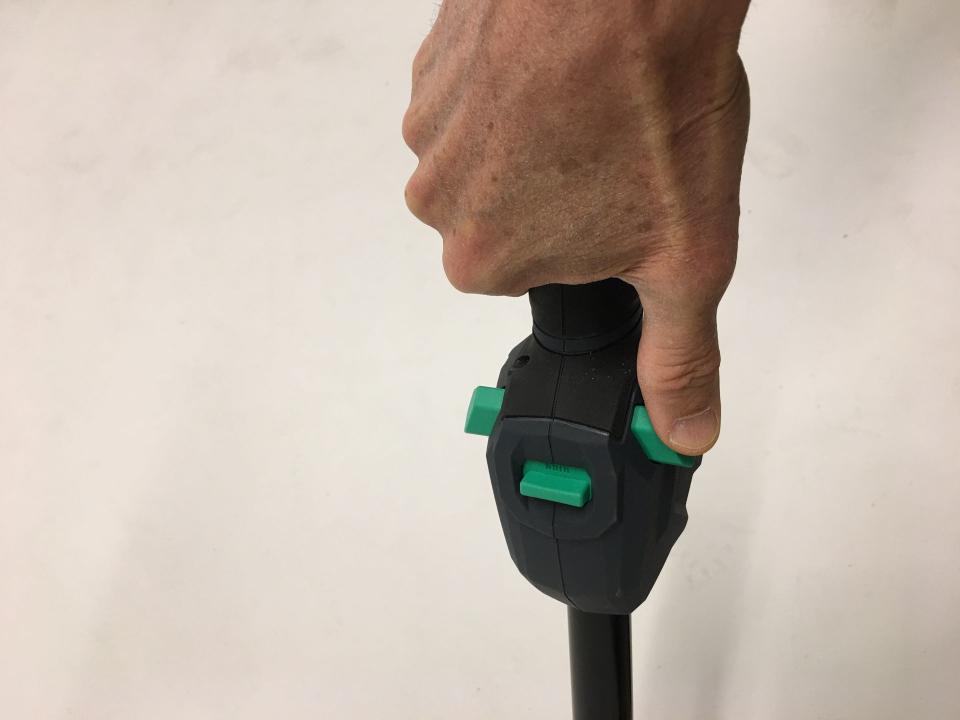
DG610 60-volt String Trimmer
With a 60-volt battery and motor at its disposal, the CAT trimmer is a weed-slashing monster, capable of taking down anything we pointed it at. The only thing it failed to cut was a pair of finger-thick briar stalks. There is one tradeoff for all that power: it’s on the heavy side. The CAT weighs in at a back straining 11 pounds, putting it in the vicinity of a gas-engine trimmer.
Along with its ample power, there were other things we liked about the CAT. It’s well balanced and comes equipped with a high-low speed switch that conserves its run time. The CAT trimmer also runs so smoothly that, tipped vertically, it was as effective an edge as a small gas trimmer. We also appreciated the high quality braided line it comes with, which beats out the stock line you get on most new trimmers.

DG610 60-volt String Trimmer
amazon.com
$134.99
The CAT string trimmer comes close to commercial capability with a robust line head, very stiff braided line that holds up remarkably well in cutting tough material and a large debris shield that is firmly fastened to the drive shaft tube.
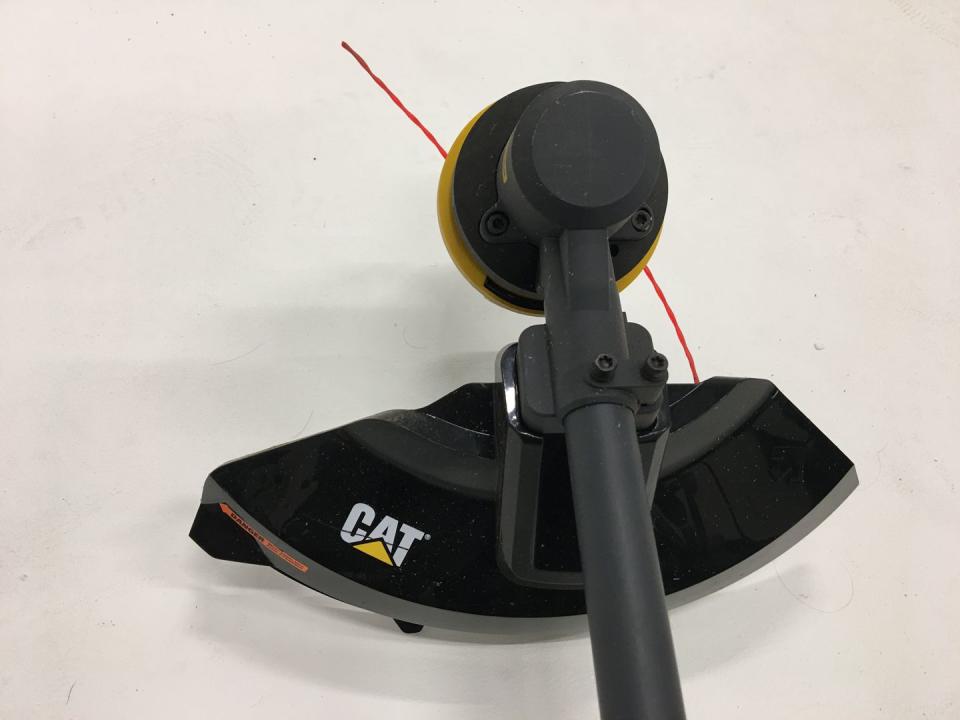
CMCST930 String Trimmer
In the realm of outdoor power tools, the 20-volt Craftsman occupies a lightweight, light-duty niche. It’s an absolute pleasure to use. No, this isn’t a weed slashing brute. But, the Craftsman CMCST930 trims effectively and neatly, and its brushless motor and 5.0 Ah battery won’t give up on you before you’ve finished the job. It’s one of the easier trimmers to handle and is easy on the ears.
It weighs a mere 6.8 pounds with a single piece of trimmer string projecting from its head, and on its low setting it’s nearly whisper quiet. A caveat here: it works vertically edging, but only if you have a light hand. Its single.080 line won’t take a whole lot of dirt impact. Go easy and you’ll be fine.
CMCST930 String Trimmer
lowes.com
$149.00
CraftsmanCraftsman’s line head is light duty, but it’s effective providing you use a light touch. A single string projects from its line head.
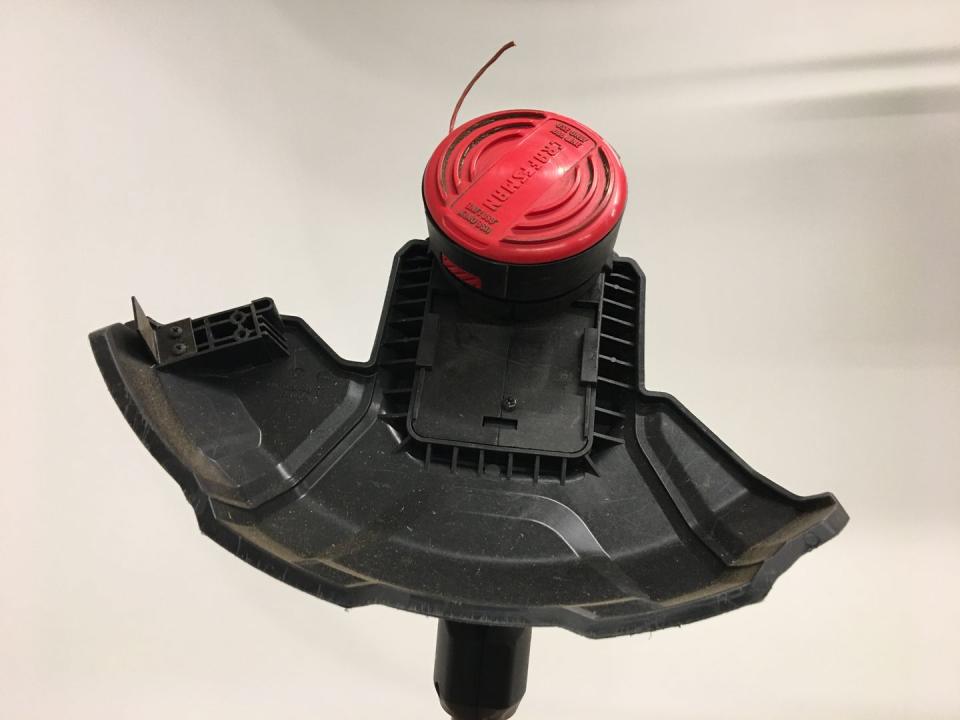
SRM-2620 String Trimmer
Echo built its name on string trimmers, and this model is a great example of why. It’s equipped with a powerful 25.4 cc engine and produces ample torque, thanks to a 2:1 gear reduction. Add in its thick twisted nylon line and you’ve got a trimmer that absolutely shreds weeds, making it worthy of a spot in a professional yard management crew’s tool arsenal.
There are also thoughtful touches that make this trimmer ideal for all day use, including a skid plate that protects the fuel tank, overmolded grips that make it more comfortable to operate for bigger jobs, and a speed-feed design that lets you reload new line in seconds. If you want pro-level power and build quality in your yard trimmer and don’t mind the noise and maintenance that comes with gas, this is the one.
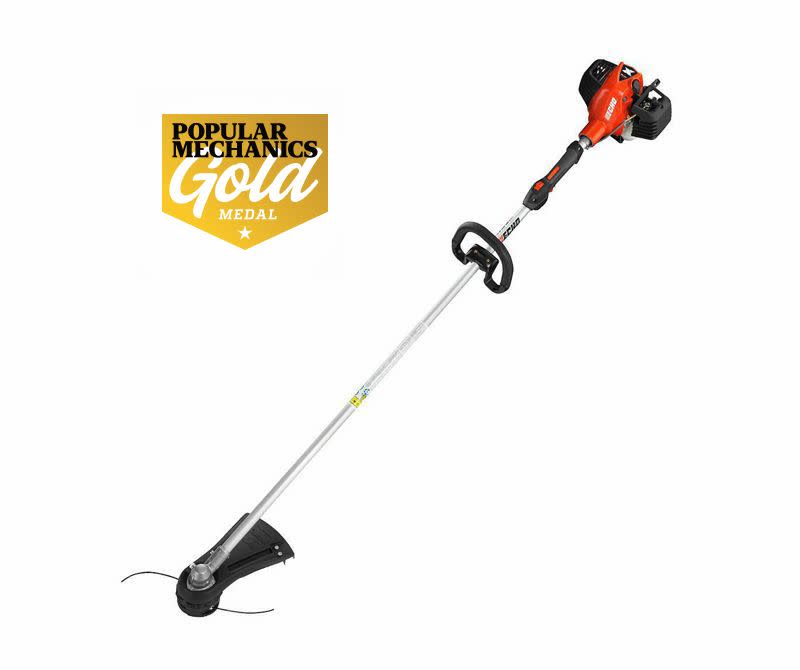
SRM-2620 String Trimmer
amazon.com
$395.89
Read More About Lawn Mowers and Lawn Care Tools & Accessories
Lawn Mowers: Best Lawn Mower | Zero-Turn Lawn Mower | Electric Lawn Mower | Self-Propelled Lawn Mower | Best Riding Lawn Mower | Best Robot Lawn Mower | Best Walk-Behind Lawn Mower | Best Reel Mower
Lawn Tools: Best Landscaping Tools | Best Lawn Edger | Best Lawn Dethatchers | Best Lawn Aerators | Best Lawn Sweepers
Lawn Mower Accessories: Best Baggers for Riding Mowers | Best Lawn Mower Blades | Best Lawn Mower Batteries | How to Repair a Lawn Mower

You Might Also Like
